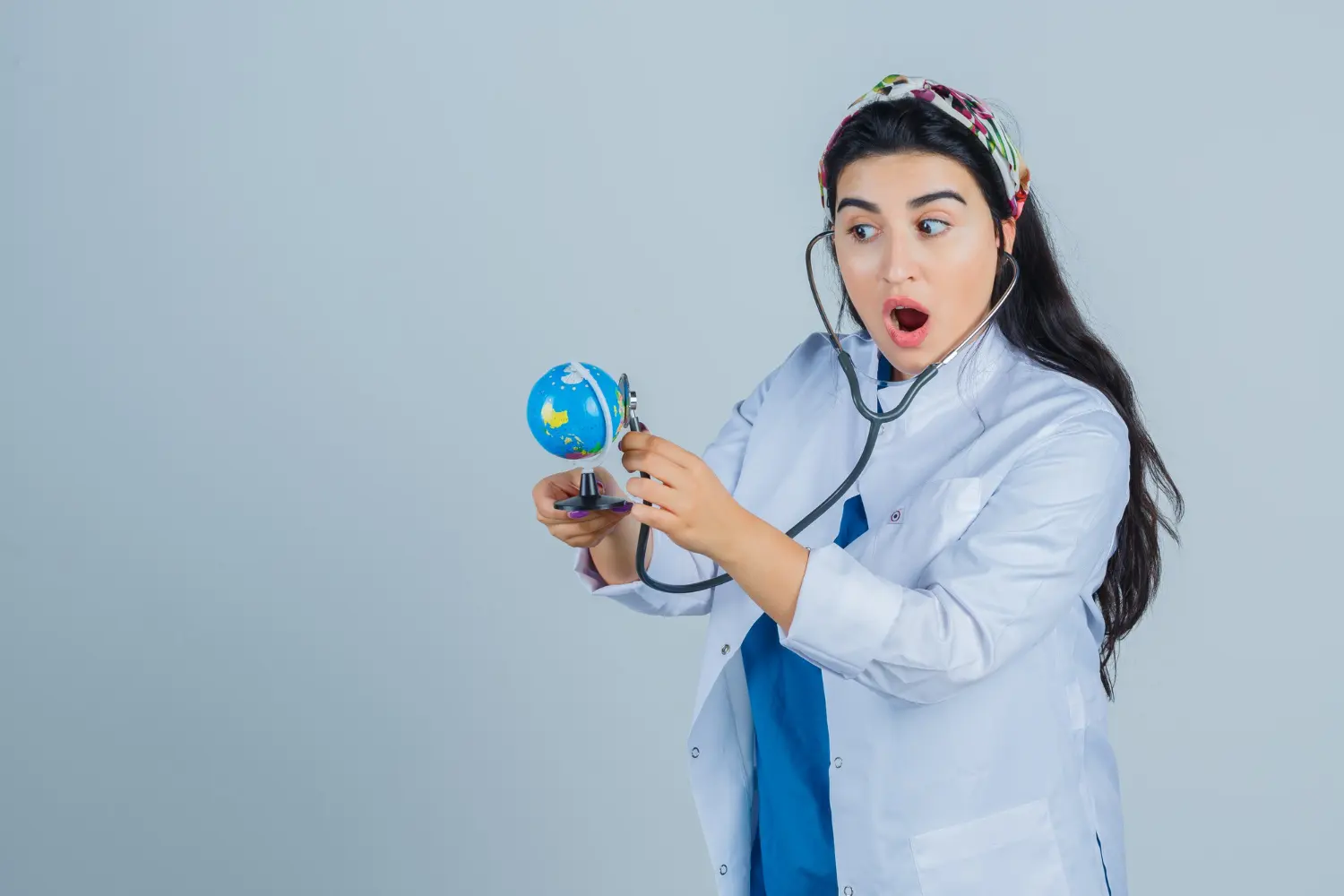The healthcare sector is expanding rapidly, and so is the demand for professionals trained in specialized diagnostic, therapeutic, and support-based services. Understanding what is allied health science degree has become increasingly important as healthcare systems around the world rely heavily on allied health professionals to meet patient care needs. According to the World Health Organization (WHO), allied health workers make up nearly 60% of the global health workforce, showing how essential these professionals are to hospitals, clinics, public health systems, and rehabilitation centers.
An Allied Health Science degree focuses on fields such as medical laboratory science, radiologic technology, physiotherapy, occupational therapy, nutrition, and public health. As healthcare technology advances and patient demands grow, graduates with this degree gain access to global career opportunities, competitive salaries, and stable job growth. This article offers a highly detailed, fact-based overview to help students understand international opportunities, academic pathways, salaries, and future trends in this expanding healthcare domain.
Understanding the Allied Health Science Degree
To begin, what is allied health science degree refers to a multidisciplinary program that trains students for diagnostic, therapeutic, and preventive healthcare roles. Unlike general medical degrees (MBBS/MD), this program focuses on the scientific, technical, and clinical skills needed to support direct patient care and medical decision-making. There are over 80 recognized allied health professions, according to the American Medical Association (AMA).
The degree typically covers subjects such as anatomy, pathology, microbiology, pharmacology, biochemistry, medical imaging, rehabilitation sciences, and clinical procedures. Students gain hands-on experience through laboratory practice, clinical rotations, and internship placements in hospitals or diagnostic centers.
NLP-friendly terms related to this program include clinical diagnostics, therapeutic rehabilitation, patient care support, healthcare technology training, biomedical sciences, and public health services. These terms help describe the broad academic and professional scope of the field.
Global Demand for Allied Health Professionals
Those searching for what is allied health science degree often want to understand global job demand. The worldwide shortage of healthcare workers plays a major role. The WHO estimates that the world will face a shortage of 10 million healthcare workers by 2030, and a major percentage of this shortage comes from allied health roles.
Countries such as Australia, Canada, Germany, the United Kingdom, and the Gulf region (UAE, Qatar, Saudi Arabia) have placed allied health careers on their “high-demand occupation lists.” In these regions, nearly 35% to 40% of healthcare job openings are specifically for allied health professionals. As the population ages, especially in Europe and Japan, the need for physiotherapists, radiographers, laboratory technologists, and rehabilitation specialists continues to rise.
Telehealth, digital diagnostics, and community health expansion worldwide also drive demand for specialized technicians and technologists, making this degree globally valuable.
Core Subjects and Detailed Curriculum Structure
To understand the academic foundation of what is allied health science degree, it’s helpful to explore the curriculum. A typical bachelor’s program spans 3, 4 years, combining theoretical coursework with clinical practice. Core subjects often include:
- Human Anatomy & Physiology
- Medical Biochemistry
- Clinical Pathology & Microbiology
- Diagnostic Imaging Science
- Therapeutic and Rehabilitation Techniques
- Biostatistics & Public Health
- Medical Equipment Handling
- Healthcare Ethics and Patient Communication
Top universities emphasize practical training because it significantly enhances employability. A report by the AMA states that students with clinical internships have a 40% higher hiring rate.
Many institutions also integrate digital health training, electronic medical records (EMR) usage, and diagnostic software training, skills now considered essential in modern healthcare environments.
Top Global Careers After an Allied Health Science Degree
Students often ask what careers they can pursue after completing what is allied health science degree. The good news is that the options are highly diverse and globally in demand. Common roles include:
- Medical Laboratory Technologist
- Radiologic & Imaging Technologist
- Physiotherapy Assistant / Therapist
- Occupational Therapy Assistant
- Nutrition & Dietetics Specialist
- Respiratory Therapist
- Rehabilitation Technologist
- Public Health Educator or Technician
According to the U.S. Bureau of Labor Statistics (BLS):
- Medical technologists earn an average of $57,000 annually
- Radiation therapists can earn $89,000+ annually
- Physiotherapists and rehabilitation specialists earn between $60,000, $80,000 in countries like Canada and Australia
In the Gulf region, allied health professionals often earn 20%, 45% higher salaries due to limited local supply and strong demand.
Future Trends Impacting Global Career Growth
The future of healthcare is evolving rapidly, making what is allied health science degree even more valuable. Major global trends shaping this field include:
- AI-powered diagnostic imaging tools
- Telehealth and remote physiotherapy
- Wearable medical technology
- Genomic testing and molecular diagnostics
- Robotic rehabilitation systems
- Electronic Health Records (EHR) expansion
The market for telehealth alone is projected to reach $455 billion by 2030 (Fortune Business Insights). This creates increased demand for trained imaging technologists, health informatics specialists, clinical data analysts, and remote therapy providers.
As technology integrates more deeply into healthcare, allied health professionals with digital and diagnostic literacy will benefit from faster promotions and higher salaries.
Essential Skills Required for Allied Health Careers
Beyond academic knowledge, students pursuing what is allied health science degree must develop key practical and interpersonal skills. Healthcare organizations worldwide value:
- Diagnostic accuracy and attention to detail
- Critical thinking and analytical skills
- Patient communication and empathy
- Technical equipment handling
- Team collaboration in hospital settings
- Digital health literacy (EHR, EMR, imaging systems)
- Ethical decision-making
A 2024 healthcare workforce study found that 72% of employers prioritize candidates with strong digital literacy, including familiarity with electronic medical record systems and diagnostic software. Soft skills, particularly communication and emotional intelligence, are especially important for rehabilitation, therapeutic, and patient-support roles.
By gaining both clinical and communication skills, students build a strong foundation for global opportunities and long-term career success.
Is This Degree Worth It for International Careers?
A major question students ask about what is allied health science degree is whether the qualification is accepted abroad. The answer is yes, most developed countries recognize allied health degrees, although some may require licensing exams or credential evaluations.
Examples:
- Australia requires AHPRA licensing for many allied health professions
- The UK often requires HCPC registration
- Canada may require provincial certifications depending on specialization
Global healthcare data shows:
- 37% growth in allied health job demand between 2020, 2024
- 65% of hospitals worldwide report staffing shortages
- Growing migration opportunities for technologists and therapists
Countries with aging populations such as Germany, Japan, and Italy are increasingly hiring international allied health graduates.
Given the strong global demand, this degree offers long-term career stability, geographic mobility, and competitive salaries.
Click Exploring Health Careers to get more information
FAQs
1. What is allied health science degree?
It is a professional healthcare program that trains students for diagnostic, therapeutic, laboratory, public health, and rehabilitative roles.
2. Which jobs can I get after completing this degree?
You can work as a radiology technologist, laboratory technologist, physiotherapy assistant, public health officer, or nutrition specialist.
3. Is this degree accepted internationally?
Yes, but some countries may require licensing exams, credential evaluation, or registration with regulatory bodies like AHPRA or HCPC.
4. How long is the allied health science degree?
Most bachelor’s programs take 3, 4 years, including clinical training.
5. Are allied health careers in high demand?
Absolutely. Worldwide shortages and technological advancements make allied health one of the fastest-growing healthcare fields today.
References / Authentic Sources
-
World Health Organization (WHO) , Global Health Workforce Statistics
-
U.S. Bureau of Labor Statistics (BLS) , Healthcare Occupations Data
-
American Medical Association (AMA) , Allied Health Education Insights
-
Fortune Business Insights , Telehealth Market Forecast Report
-
National Center for Biotechnology Information (NCBI) , Healthcare Workforce Studies
-
Health Workforce Australia (HWA) , Allied Health Labour Market Analysis



